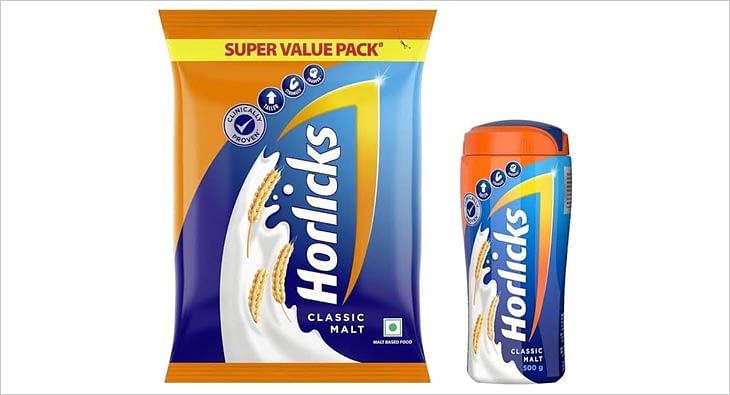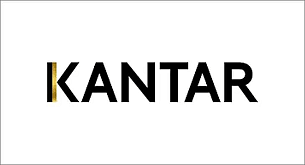e4m MarTech League: ‘AI will now change the way we re-engage with customers’
As part of the e4m MarTech League Friday virtual roundtable, experts shared how marketers can apply creative thinking to adapt to the new normal
This week’s e4m MarTech League Friday saw key industry leaders share their insights on how marketers can apply creative thinking to produce a genuine commercial return and how to reimagine MarTech around the consumer’s behavior patterns for re-engagement.
To deliberate on the topic - Technologies for Enhanced Customer Engagement – as part of the virtual session we had Janak Sarda, Managing Director, Deshdoot Media Group, India; Shweta Srivastava, Head of Digital, Philips India; Bharat Sethi, Founder & CEO, Rage Coffee; Mukul Kumar Sharma, COO, Pinkvilla Media Pvt. Ltd., and Ashish Jain, Head Of Ecommerce, Head- Digital Marketing, Godrej & Boyce Mfg. Co. Ltd. The Session Chair for the webinar was Sanjay Trehan, Digital & New Media Consultant.
The conversation began with Shweta Srivastava talking about how the customer level graph was shaping up. “I believe that customer engagement has two points. One is the organic engagement which all happened because of the COVID-19 situation. The other one is the triggered customer engagement when you realize there is an opportunity but need to trigger it because it didn’t come organically. In the healthcare business, there was an organic engagement because of the nature of the business. But in consumer business companies had to trigger it to engage with the customer in a situation where there is an opportunity because they are spending more than 25-30% time online. We got this opportunity to engage with our customers, doctors, and physicians.”
Sharing more on the initial hiccups when the lockdown began and the learnings from those months, Sharma commented: “When the lockdown started we heavily relied on content in terms of video. Initially, though consumers were spending more time online there was a lot of content. A lot of sites witnessed a heavy growth in their traffic but they were primarily traditional news sites. We did not see any drop but did not see any spike either. Then we innovated on content. We don’t just cover Bollywood, we also do a lot of Lifestyle, Fashion and Beauty content which is restrictive in terms of what we can do in this scenario. We started doing more on health which worked very well. We had videos like on COVID awareness, how you can take care of your health, and boost your immunity. Our discussions were based on data, social listening tools, in-house analytics tools on user behavior, and what users were reacting too in terms of Google trends.”
Taking the discussion ahead, Ashish Jain spoke about the steps they took as a company. “Furniture is a business which is both discretionary and includes a lot of supply chain in terms of deliveries and installation. In April and May when we went into deep research and we saw there was a sudden jump in terms of people looking for work from home-related content. As a brand, we started communicating with our audience two times a day. In the morning we spoke about what they can do to ensure that their day goes by properly and in the evening we were talking about very simple health tips and exercises. There is a huge increase in terms of engagement. We went into the depth and understanding of what exactly is happening in the market rather than thinking about what we can do to increase our sales. For the first two months, we invested our time in understanding the pain points and subsequently built a strategy to cater to this new demand to help the customer in this time of need.”
Bharat Sethi shared how his new business adapted to this new situation. “We are a CPG and packaged coffee company. We manufacture, distribute, and market innovative coffee products to the Indian audience online. We have offline businesses as well but we largely a digitally native and digital-first brand. We think our customers, products, marketing, advertising, and customer acquisition in a very digital manner. The DNA of the company is Direct To Customer. April was a difficult month for a lot of business. We have seen a continuous recovery. June was the best month for business, largely because competition coffee shops are shut and also at-home consumption has increased. We have been omnichannel since our inception. We were very well set up for this change. We were available D2C, own websites, and followed customers throughout their journey and became their go-to choice.”
Talking about the best marketing tools available to deploy in a COVID scenario,
Janak Sarda said, “We need to start embracing technology and make it mainstream. We need to bring it into our DNA as marketers and kind of thinking of our brand’s vision on embracing it and going to the market with those strategies. Essentially what we noticed was the hike cycle was terrific at the beginning of the COVID season it continues to remain like that. However, distribution channels and distribution challenges that every product or marketer faced were unique. But the customer engagement initiatives that they needed to launch during this time came as a team of sorts. We need to be now better equipped and prepared to face a situation like this. This is not a temporary crisis that can be resolved through PR. It is a long-lasting impact that your brands are going to face and you are going to need to use technology smartly to start communicating. One of the biggest advertisers globally is now deploying a permanent bot. We are working on one of those bots and helping them visualize what is the kind of communication they need to have with their consumers not just during a crisis like this but otherwise as well.”
Speaking about personalization, Sharma remarked, “We do various categories in lifestyle. Also, a lot of K-pop is being picked up. There's a huge fan following globally for them. We're making buckets for user content choice and repurposing the content to retarget the user. We're trying to engage users. For instance, On K-pop, there are close to 10k comments on an article. These are all native comments on the site. We need to figure out which section of users want what. We're using a bunch of technologies to further target the user base.”
On the same note, Jain shared insights on personalization. “We have put complete emphasis on response on our chatbots. When we talk about demand, in one quarter, the context has changed completely. This shift in the last 4 months has changed the entire perspective on personalization. Customers try to look at what kind of furniture they require and whether or not it fits. That's where we're using AR.”
Sethi commented that when it comes to outreach, social media is a priority these days. “Beyond social, there are general channels used including email marketing, google, SEO, etc. User sees a product when they see a product somewhere online. For instance, Google does the correct remarketing. Within social media, there's different content including videos. Brands need to figure out what works best. The way of sending emails, feedback forms, CX, texting is all within the jurisdiction of holistically clubbing and cohesively building a channel for retention.”
Srivastava shared that if marketers do not change or become smarter, it will be very difficult to sustain. “When you think from a customer perspective and not from a technology perspective, it’s easy to decide what is good and what is bad”, she commented.
On a parting note, Sarda said, “The vision capability of AI is going to change the way we re-engage with our customers from here on.”
Read more news about Marketing News, Advertising News, PR and Corporate Communication News, Digital News, People Movement News
For more updates, be socially connected with us onInstagram, LinkedIn, Twitter, Facebook, Youtube, Whatsapp & Google News
About 60% Instagram influencers in India have fake followers: Report
As per a media report, influencer marketing platform KlugKlug has found that only 2.48 million profiles out of the 8 million have ‘high-quality’ followers
Two of three Instagram influencers in India have more than 60 per cent fake followers, a report by influencer marketing platform KlugKlug shows.
This is particularly true for the beauty and fashion sector, the report noted.
Other countries that have influencers with fake followers are Brazil, the UAE and Indonesia.
As per media reports, such Instagram fake followers can be roped in for as little as Rs 10 to a high of Rs 1,000.
According to Klug Klug India, only 2.48 million profiles out of the 8 million have high-quality followers.
A number of other categories have also been buying fake followers, media reports have noted.
As per a media expert, quoted in the reports, brands are finding it difficult to identify and curb the menace of fake followers and bots.
In a recent setback for influencers the Central Consumer Protection Authority (CCPA) has said those promoting activities like gambling and betting are equally liable as the companies promoting the same.
15% consumers enhance their user experience through virtual assistants: Kantar report
According to Soumya Mohanty, Managing Director & Chief Client Officer- South Asia, Insights Division, Kantar, less than 1% of ads get tested due to lack of time
Marketing data and analytics firm Kantar has unveiled a report that studies the burgeoning AI market to dish out actionable insights for marketers. Within AI, virtual assistants are the fastest growing segment. The report noted that 15% consumers enhanced their ‘user experience through virtual assistants’. This segment is the fastest growing at 27% YoY.
According to the study, while ‘fitness’ and ‘social media’ apps are amongst the leading categories, driving AI adoption (with an average of 2.3 AI led features embedded in these applications), segments like ‘BFSI’, ‘job search’ and ‘short video’ apps are relatively slow in AI adoption, with an average of 1.2 features each. Entertainment apps, digital commerce and pharmacy apps stand somewhere in the middle with 2.0 & 1.8 AI features being adopted, respectively.
Additionally, the report said that while 90% of marketing and sales leaders think their organisations should be using AI “often”, 60% said their organisations “rarely or never” do. Speaking to exchange4media, Soumya Mohanty, Managing Director & Chief Client Officer- South Asia, Insights Division, Kantar highlighted that currently there are a lot of organisations who know that there is something called AI, but haven’t yet figured out how it could help them holistically.
“A lot of the AI just gets used for efficiency purposes, so repetitive tasks get automated,” Mohanty pointed out. Data also plays a big role in why certain organisations are struggling with how to use AI.
For instance, Mohanty explained that in segments like D2C, telecom etc. there is a lot of primary or first-party data. So being able to leverage AI also gets easier. “It's the traditional large sort of FMCG type companies where data sits in silos. You don't really have one single source of data where it's a little difficult to use the full power of AI, because the full power of AI also needs a lot of data sitting in a structure that you can use,” she added.
So, can AI help marketers have a unified view of data? No, says Mohanty. “AI does not help marketers get a unified view of data. Once you have data in a unified way, AI can help you do a lot more with that data.”
According to her, organisations today need to have good, strong data warehousing. “It needs to make sense because a lot of the silos are also because everybody owns one part of it. A lot of people have their own analytics teams internally, so there are a lot of agendas and stakeholders. And then we say data is in silos because fundamentally, when you're doing something internally, different people have different stakes in it,” Mohanty added.
Puneet Avasthi, Senior Executive Director, South Asia, Insights Division, Kantar shared that most organisations are now heavily investing in creating first-party data sets. “Companies that have first party data about their consumers and transactions or interactions that they have with the brand are going to be able to leverage that more effectively to create sharper profiles for the brand as such for the consumer and build relevant recommendations at the right moments.
Panning out she also highlighted how AI can be leveraged to enhance market research and make it more accessible, a part of which Kantar is itself involved in. “A lot of times people say that we can't test an ad because we don't have time. So less than 1% of advertising gets tested and just gets put out. Does it work when it gets put out? It is the question the audience should answer, because so many times, it backfires,” Mohanty shared. Apparently, digital particularly doesn't get tested because organisations just do a/b testing and leave it at that.
Speaking of preferred use cases of AI, Avasthi added that various businesses and brands are looking at creating an experience for the brand that is in line with the brand's architecture and progress across all touch points. “That is something that the AI engines that are working behind can ensure, that all such interactions are consistently delivered across different virtual assistants or chatbots that are available to the consumer,” he said.
The other use case, according to Avasthi, is ensuring that there is greater visibility for the brand in the digital sphere as such, through various recommendation engines, when a certain need is being looked for and to throw up the right kind of information about the brand so that the brand message is amplified in the mind of the consumers.
Among other insights from the Kantar AI report is that 88% consumers used AI based algorithms which analysed their preferences, behaviours, and interests to create personalised recommendations for tailored experiences. This segment grew at 6 % YoY. At 21%, ‘smart home automation’ is a smaller segment but growing at 25% YoY.











 Share
Share
